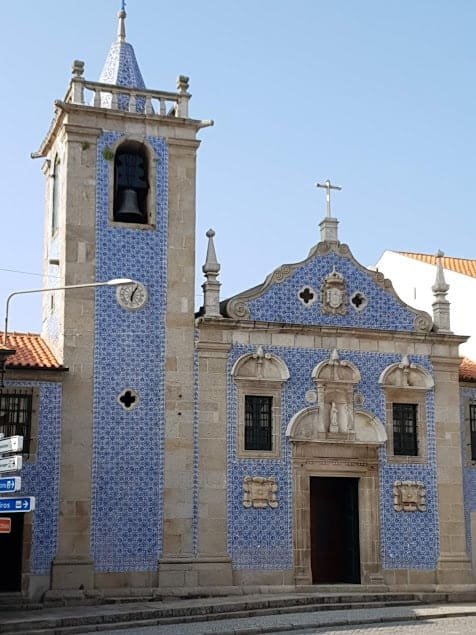A typically Portuguese village, small, welcoming and peaceful. This is how we can define Vouzela, a small town located in the District of Viseu and in the region called Beira Alta, an area known for being mountainous and cold in winter and somewhat hot in summer. The town calls itself “The Heart of the Center”. After visiting the city, you will understand why.

Vouzela is small, as it is nestled between mountains, and has just over 10,000 inhabitants throughout its territory, which stretches across the mountains in nine parishes. However, there are few inhabitants in the center of the town. Modernity has not yet fully arrived in the area, which makes our trip there even more interesting.
Not that it lacks modernity. The inns and hotels do have all the comforts that tourists deserve, both for those who like the cold and those who prefer to visit the town in the summer, but what we see on the streets is tradition, a desire of the residents and authorities to maintain the essence of the town as it was in times gone by. There is no visual pollution – or noise pollution – and the signs and signs of the shops are installed there in accordance with the facades of the robust stone buildings, which in many cases are covered in tiles.



Vouzela was founded as a town in 1836, when it was separated from neighboring São Pedro do Sul, but its history dates back many centuries. There are records that a monastery was built in the 11th century, and according to researchers, the town was first recorded in the year 1083, when the old monastery was built, which over the centuries became the town's main church.

The town hides some treasures. The houses in the small and cozy historic center are mostly buildings dating back to the 16th century, with sturdy and solid stone constructions. In the center of the town, the small Roman bridge, built in the 16th century, still serves as a passage when we want to cross the Zela River, which connects Coimbra to Chaves. The bridge is still used today as a normal means of transport by the people of Vouzela. Crossing the bridge, on the left we see a grandiose work: the arches of the old train bridge, a building with enormous stone arches that the train used to pass through until the end of the 1990s.

At the base of these imposing arches, there is a beautiful, well-kept park with fountains, indoor public swimming pools, a children's playground, parking and decks. All this to make the visitor's experience even richer. Climbing a small staircase, we reach the main street, where the Vouzela church is located, all made of stone.

Walking down this street and passing under the arches of the now-defunct train tracks, we see very well-kept buildings, well-tended gardens and, in the background, a romantic-style church covered in tiles, dating back to the 18th century. Beautiful. Most of the buildings in the small village use granite, which is very common in this mountainous region, for their walls, made of almost raw stone.

The town is located in a lush green region and prides itself on maintaining its rural character, with hundreds of properties still growing fruit and vegetables along the route. Being in the heart of the country, Vouzela was of great importance for the Roman Empire, as it was located between two ancient and major roads, and this influence is very evident in the architecture.